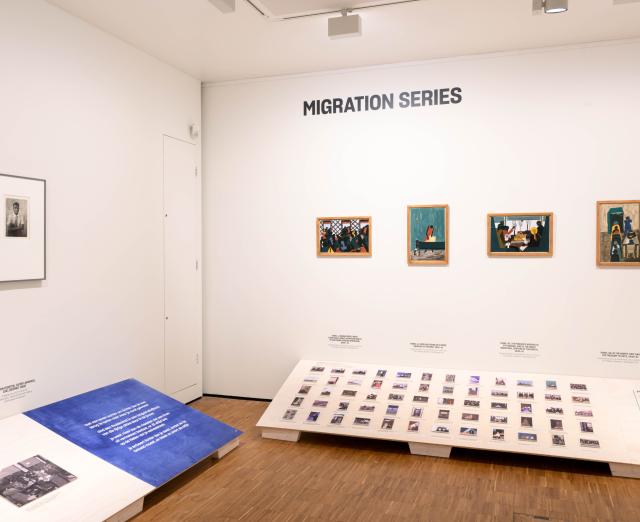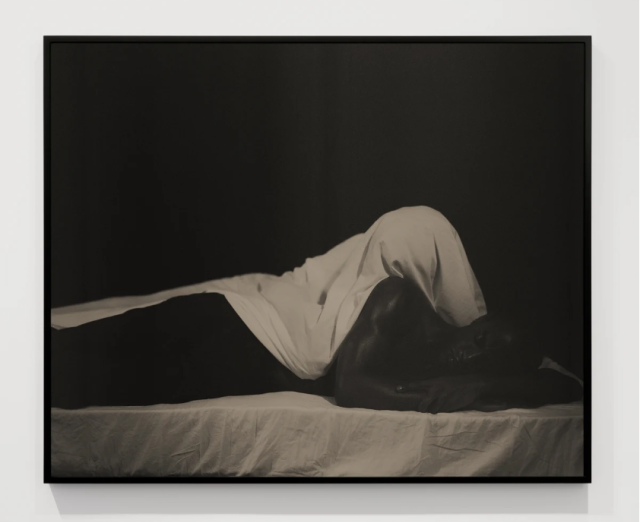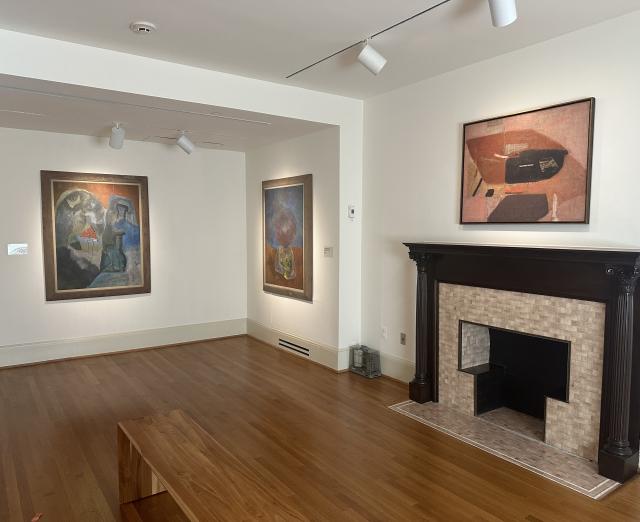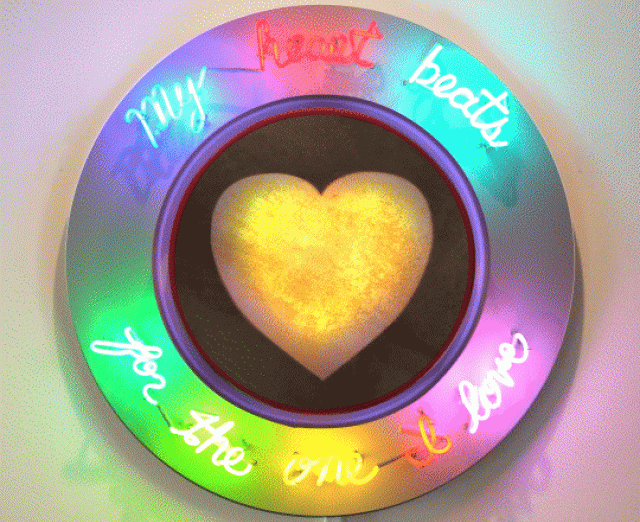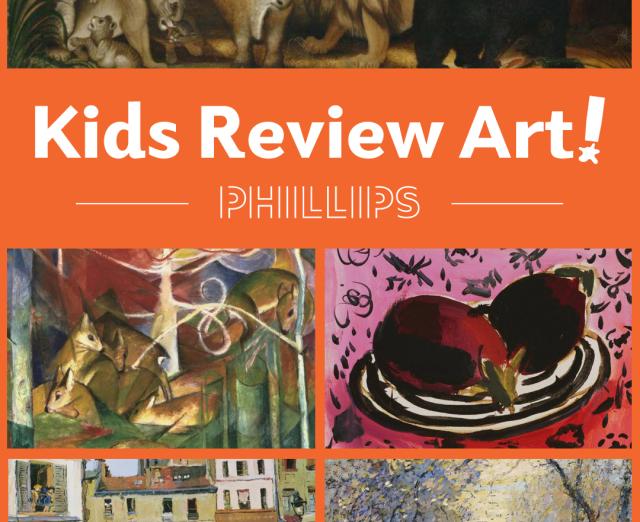The Artist's Studio as Inspiration
Collection
Phillips Educator Patricia Svoboda on paintings depicting the artist’s studio in the Phillips.
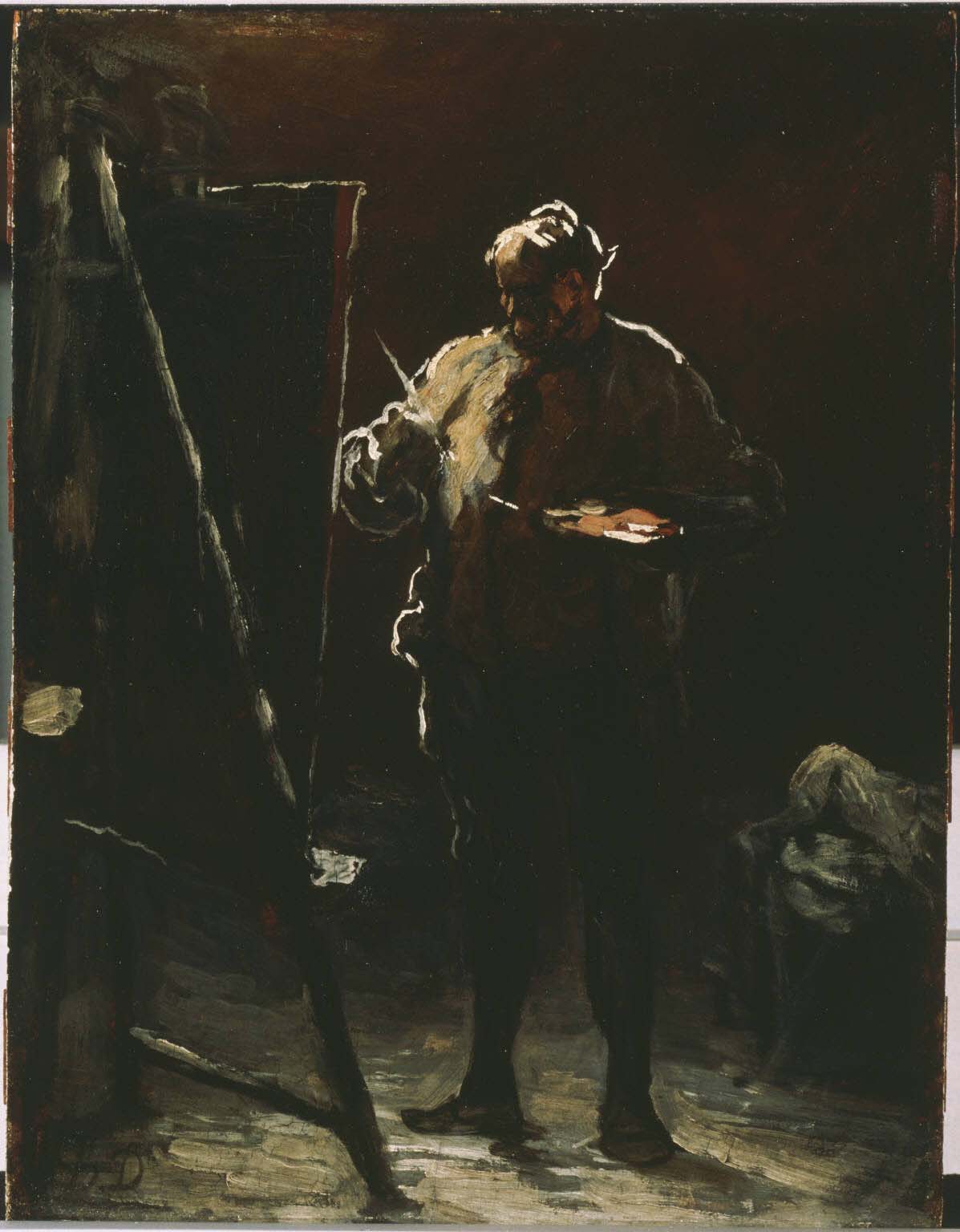
The artist’s studio theme is well represented in paintings of The Phillips Collection. The artists in this collection have been inspired by the studio as a center of creativity, a retreat for singular pursuits, and a place for social gatherings to exchange theories.
An early depiction is Honoré Daumier’s Painter at His Easel (c. 1870) in a dark studio, emphasizing the moment of concentration when the artist is inspired to transmit his creative ideas onto the canvas. The white outline of the figure with his easel and instruments highlights this mental process.
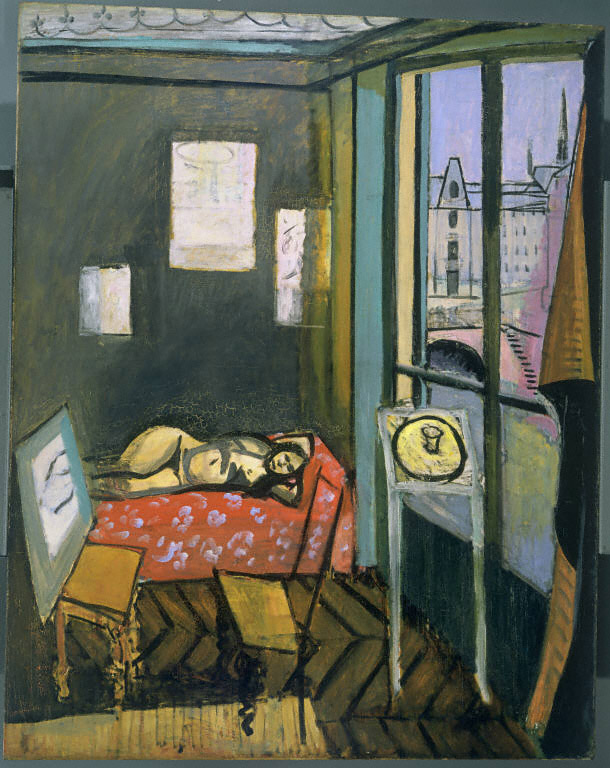
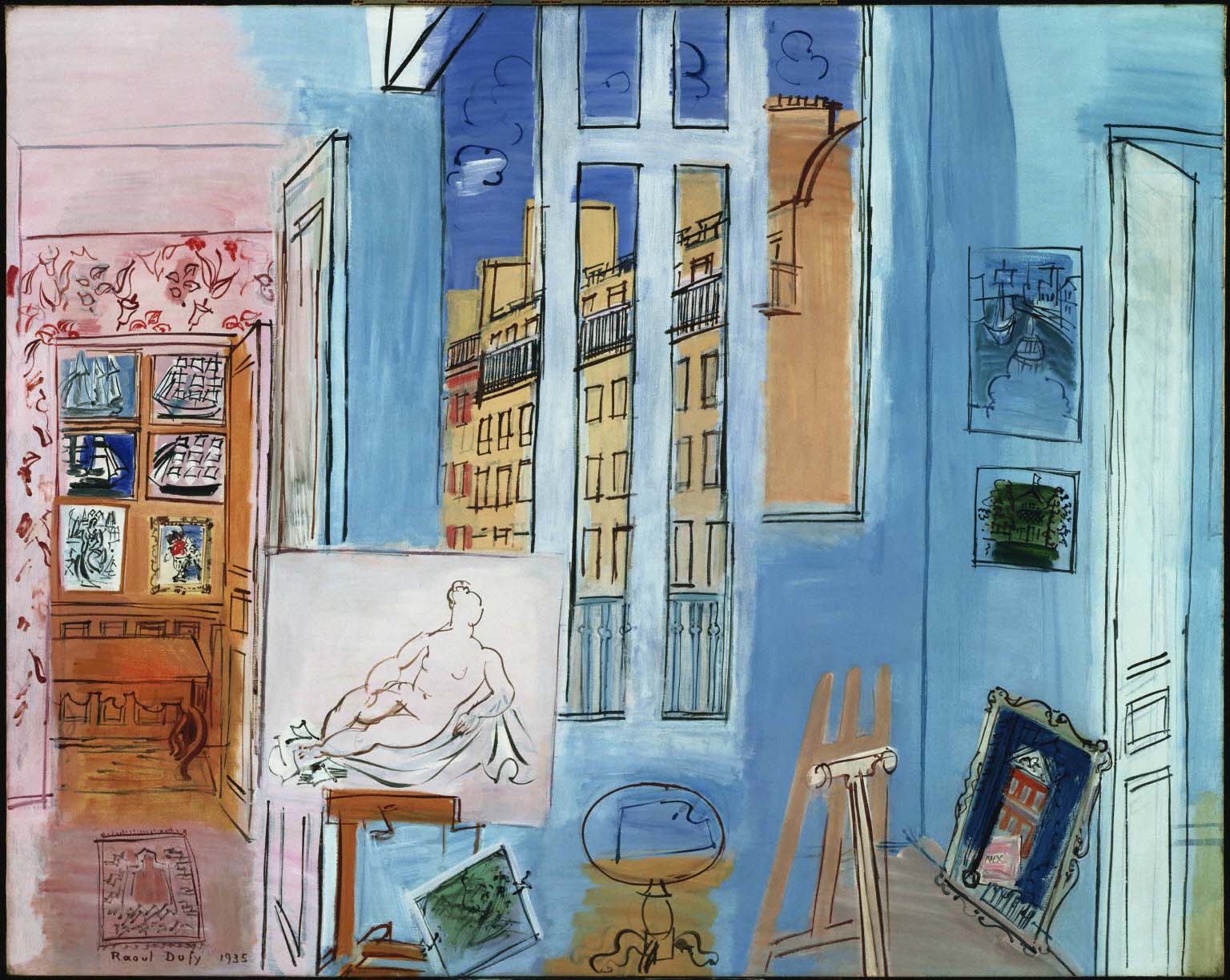
One can compare Henri Matisse’s Studio, Quai Saint-Michel (1916) and a work by his contemporary, Raoul Dufy’s Artist’s Studio atL’Impasse de la Guelma (1935)—both paintings depict interior and exterior views of their Parisian work places, with displays of their artworks and female models. Whereas Matisse’s composition has a more sober approach, reflecting the uncertainty of the World War I period, Dufy’s painting is joyous and colorful, more in line with his elegant stage designs. Matisse’s portrayal of his studio and model Laurette demonstrates modern techniques in experimenting with space. Another interesting version of Matisse’s studio is Painter and His Model (1916-17), held at the Musée National d’Art Moderne in Paris. Dufy painted the studio theme in a remarkable series starting in 1909 and throughout his career.
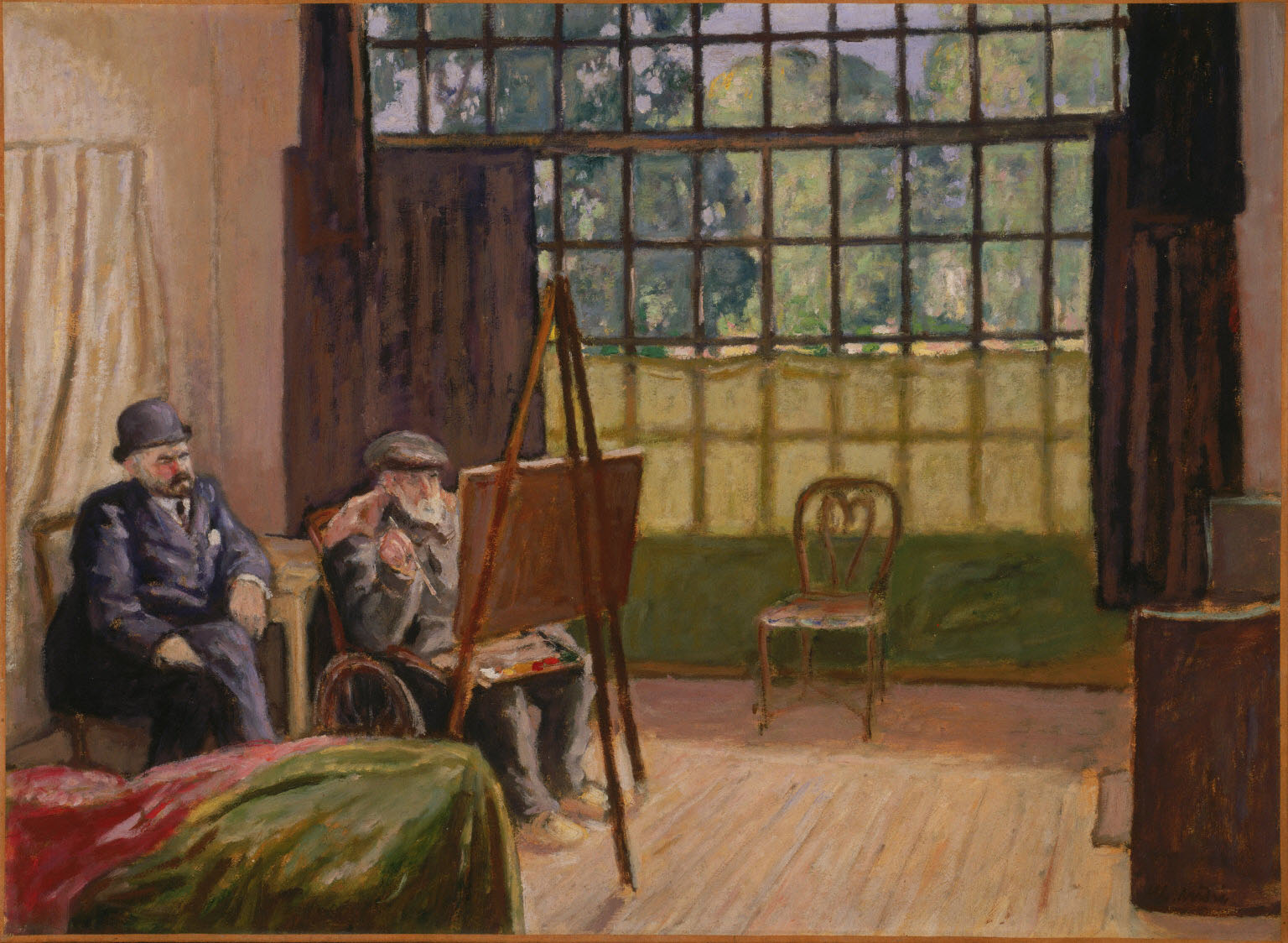
Pierre-Auguste Renoir was greatly admired by Henri Matisse and Albert André, who both visited the artist at his home in Cagnes-sur-Mer on the French Riviera. André’s Renoir in his Studio (1916) depicts the artist painting at his easel with a visitor by his side. The large-paneled window brings light into Renoir’s house studio, which is surrounded by his beautiful garden and olive grove. Duncan Phillips purchased this painting in 1923, when he acquired Renoir’s Luncheon of the Boating Party (1880-81). Today, one can visit Renoir’s home in France and view his studio and art collection.
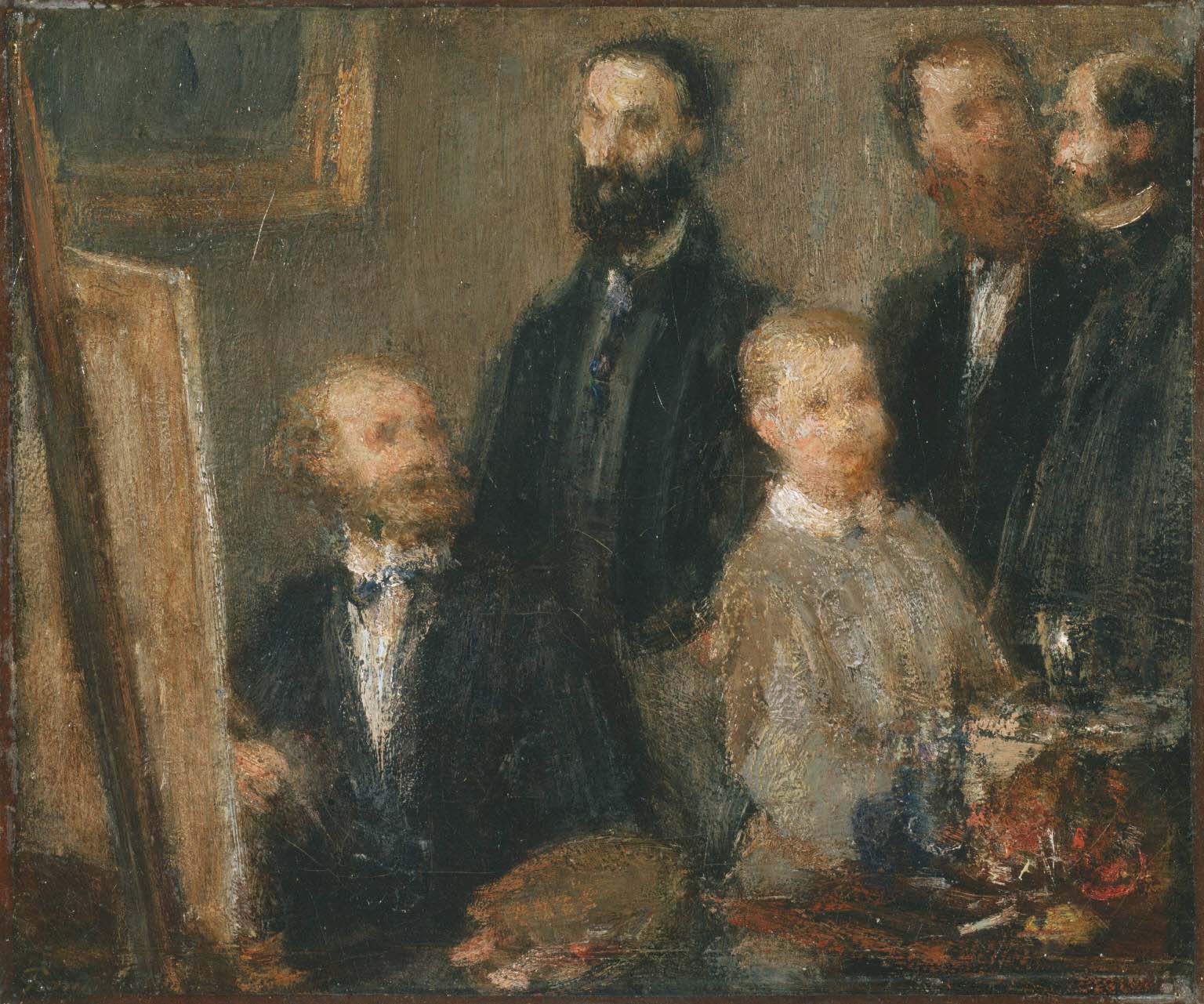
Henri Fantin-Latour created a series of group portraits on the theme of the studio as a gathering place for progressive artists and writers. Fantin-Latour’s oil sketch Manet in his Studio (1870) is related to his finished painting A Studio in the Batignolles (1870), held at the Musée d’Orsay in Paris. The Phillips Collection oil sketch has often been considered a study for the final painting, but it is now believed to be a variant created after the artist had begun work on the Batignolles painting. In the oil sketch, Fantin-Latour has placed Édouard Manet at his easel surrounded by three friends and a young boy, identified as Léon Koëlla-Leenhof, a member of Manet’s household. In the Batignolles painting, seated Édouard Manet is surrounded by a larger group of his friends: left to right standing Otto Schölderer, Pierre-Auguste Renoir, Émile Zola, Edmond Maître, Jean-Frédéric Bazille, Claude Monet, and seated Zacharie Astruc. Fantin-Latour’s Batignolles painting raised the profile of this Impressionist group, and the artwork was accepted in the 1870 Paris Salon exhibition.
Bibliography:
Hall, James. The Artist’s Studio: A Cultural History. New York, NY: Thames & Hudson Inc., 2022.
Passantino, Erika D., ed., and Scott, David W., ed., et al. The Eye of Duncan Phillips: A Collection in the Making. Washington, DC, and New Haven, CT: Phillips Collection in association with Yale University Press, 1999.
